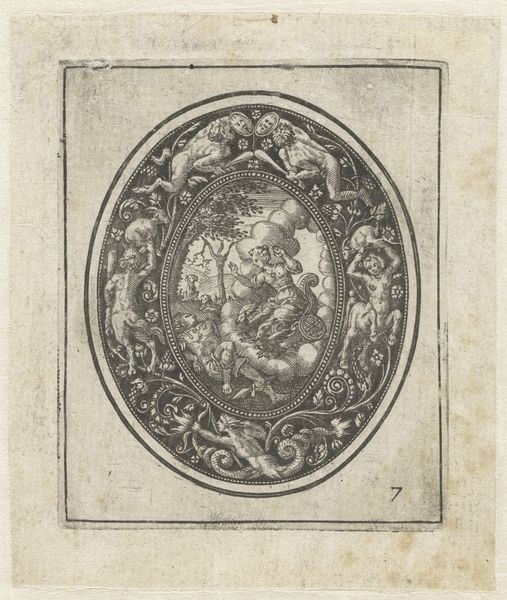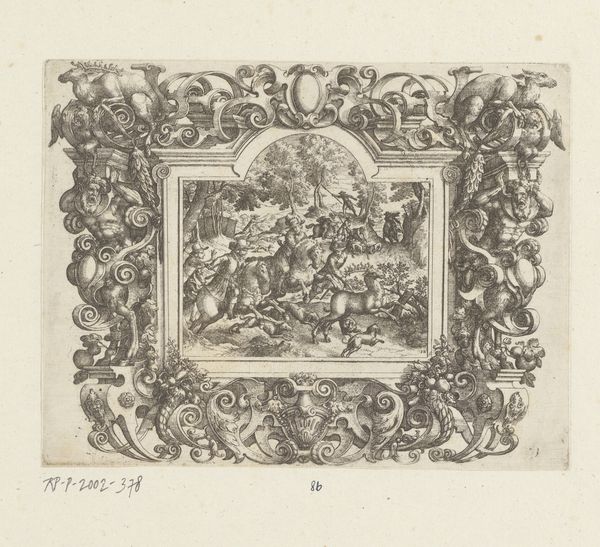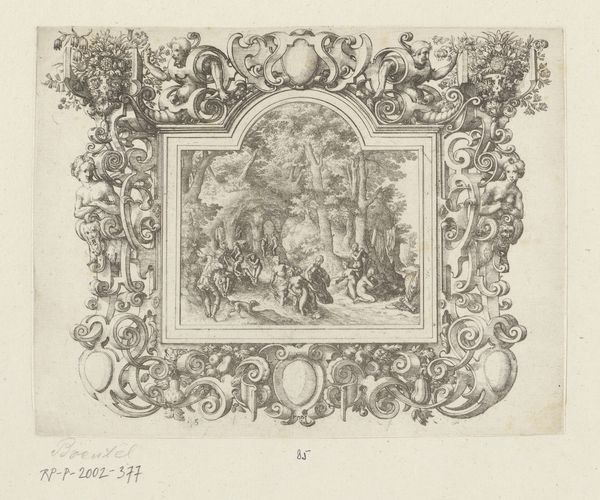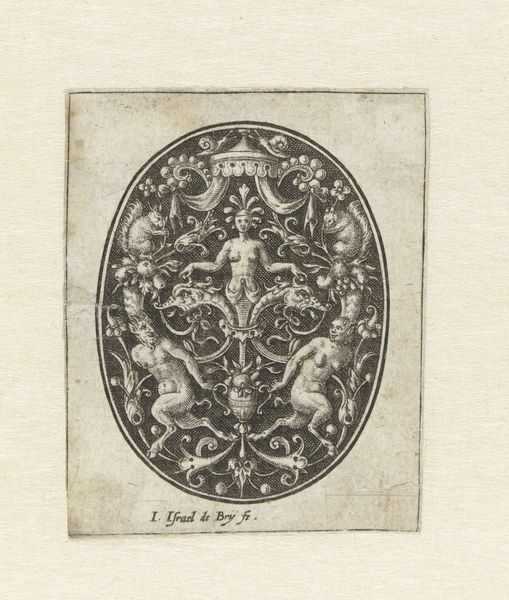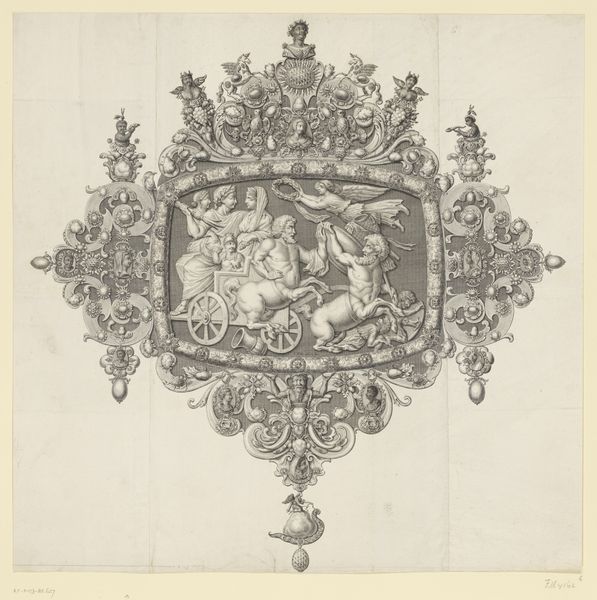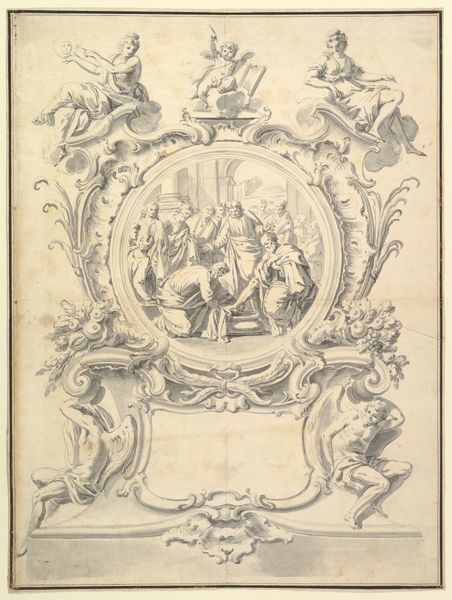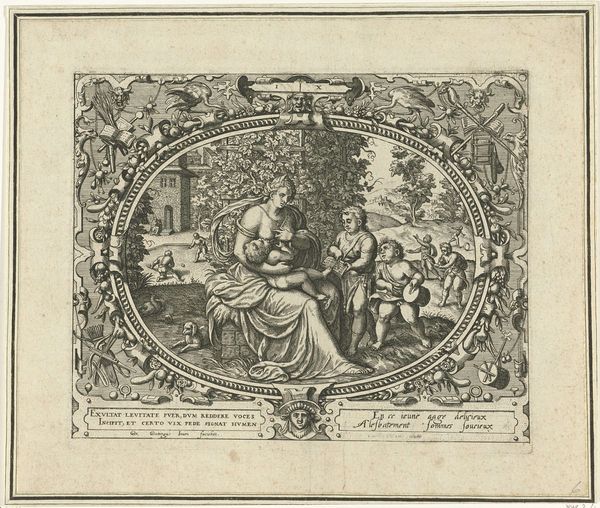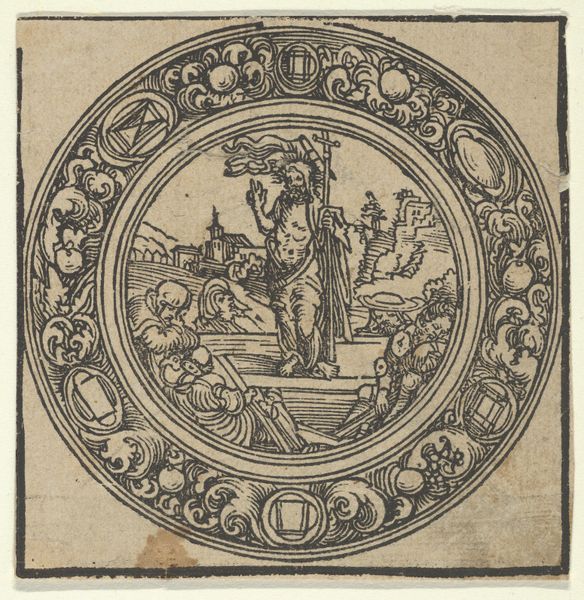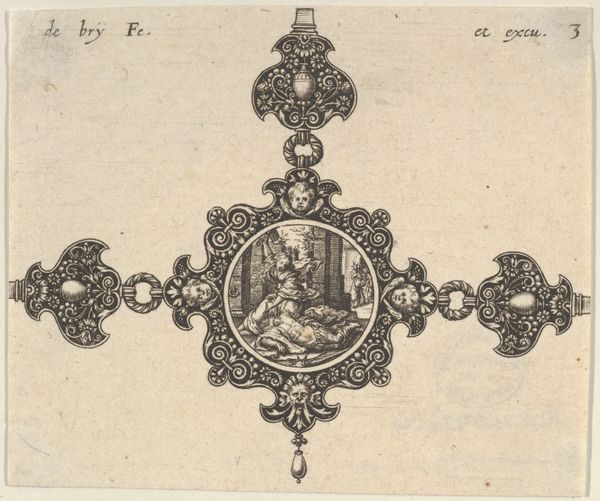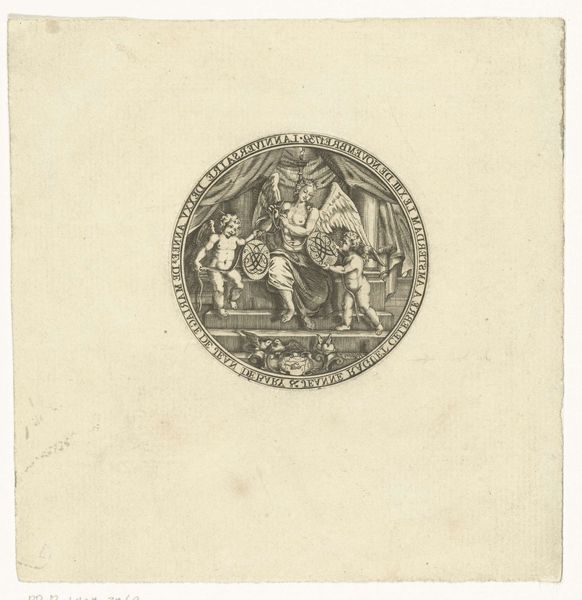
Copy of the Center of a Design for a Brooch 1580 - 1700
0:00
0:00
drawing, print, engraving
#
drawing
#
narrative-art
# print
#
mannerism
#
figuration
#
11_renaissance
#
line
#
history-painting
#
nude
#
engraving
Dimensions: Sheet: 1 7/8 × 2 5/16 in. (4.8 × 5.9 cm)
Copyright: Public Domain
Curator: This captivating engraving, titled "Copy of the Center of a Design for a Brooch," dates back to the late 16th or 17th century and is attributed to Johann Theodor de Bry. Currently, this small but intricate work is housed here at the Metropolitan Museum. Editor: My first impression is one of theatrical density. The central composition seems incredibly crowded, almost suffocating, contained within an ornate, symmetrical frame. Curator: Absolutely. The Mannerist style is very evident here, and de Bry certainly showcases that penchant for elaborate, stylized forms. Notice how he employs visual metaphors related to fertility, but also, on the left, darker more unsettling figures. Editor: The figure on the left, draped and bearded with animalistic features, seems to preside over the scene. I notice the varying degrees of depth achieved through line work—the foreground figures more heavily defined, creating contrast within the tonal range of black and white. Curator: Considering the historical context, prints such as these circulated widely as inspiration for artisans and craftsmen. The composition’s narrative is probably some veiled retelling of an classical allegory. The presence of a male figure on the upper border might suggest a symbolic protector figure or even a marker of social status linked to wealth and aristocracy. Editor: That's fascinating. I was primarily responding to its almost claustrophobic quality—the lack of negative space creates this intense, almost dreamlike atmosphere. How each component relates within its frame through their individual placement is fascinating in terms of symmetry and harmony. Curator: And this careful balance helps us comprehend both how a piece of jewelry communicated the values of a bygone era, but it allows us access, by viewing the image, into that lost culture today. Editor: Agreed. Analyzing the use of light and shadow, along with symbolic associations, is what allows this design, even after so many years, to speak eloquently across the centuries.
Comments
No comments
Be the first to comment and join the conversation on the ultimate creative platform.
